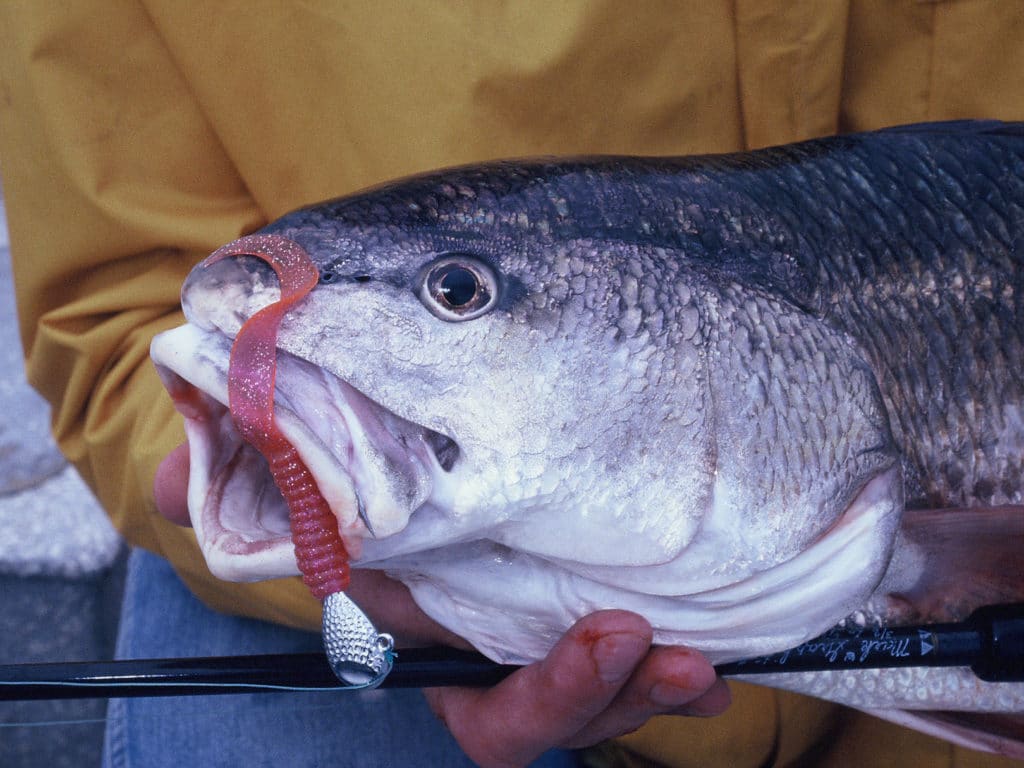
Florida has a long and very involved history managing its popular and highly regarded red drum (redfish) fishery.
Over the last 40 years, the state has gone from almost no redfish regulations to strict lock-downs halting all harvest when commercial netting nearly wiped out brood stock redfish in the early 1990s. Regulations today are in-between those extremes. But state management is changing to keep pace with Florida’s ever-growing population and environmental issues.
Now Florida’s Fish and Wildlife Conservation Commission (FWC) has set Sept. 1 as the beginning date for a whole new, much larger and detailed plan for guiding anglers targeting reds.
The tripling of the state’s coastal management areas along Florida’s waters from three to nine zones is one of the most telling oversight changes coming Sept. 1.
In its July meeting, FWC established the following regulations that will begin Sept. 1.
- Establish nine redfish management (coastal) regions.
- Prohibit captain and crew (guides) from retaining a bag limit of redfish when on a for-hire trip.
- Reduce boat limits in each of the management areas as follows: four fish for anglers in the Panhandle, Big Bend and Northeast zones. In Tampa Bay, Sarasota Bay, Charlotte Harbor, Southwest and Southeast just two fish per boat, per day.
- Catch-and-release fishing only for reds in the Indian River Lagoon region.
- Daily limit for slot redfish (18 to 27 inches in length) is one per day for all zones – this is a big reduction for Northeast region anglers who for years have been allowed two per person, per day, with no vessel limit.
“With this new forward-thinking management approach, we’re trying to do what’s best for this fishery. This agency is committed to working proactively to conserve the redfish fishery in Florida for future generations while balancing stakeholder interests,” said FWC Commissioner Steven Hudson.
Many Florida anglers are still unaware of the major changes on tap to this popular and important fishery. As they learn about the forthcoming rules, some anglers are satisfied, many are unhappy, and some contacted for this story have no comment for fear of backlash from others who don’t share their views.
One huge change to the new redfish management plan is the opening of a one redfish per day harvest for anglers in the Southwest region. The state had closed all harvest of reds for four years due to a devastating red tide (algae bloom) event that wiped out countless redfish, seatrout, snook and other species.
Over the past four years, state biologists have been monitoring redfish stocks in the southwest corner of the state. They believe now is the time to open it again to anglers. FWC biologist Jeffrey Renchen says redfish stock levels in the region have rebounded to numbers prior to the red tide die off.
“Yes, it has gotten better for redfish in Southeast Florida,” says Sarasota Capt. Geoff Page, a well-known and successful inshore angler. “But the numbers are nowhere near what they were before 2017 and the red tide of 2018.
“I believe the number of boats on the water in the Southwest Region are too many to allow redfish harvesting just yet. On the good side, there’s been no red tide recently, the water is clearing, and grass beds are coming back, so I’m seeing more redfish.”
Closing of redfish harvest in the Indian River was expected and is embraced by most anglers regularly on the water there. Water quality and diminishing grass beds have impacted the once superb red drum and spotted seatrout fisheries in the Indian River. Anglers such as renowned Capt. Rufus Wakeman of Jensen Beach, Fla. is in favor of no redfish harvest, and adds that because trout are scarce local anglers are heavily targeting snook, that need protection, too.
In the Northeast, the big reduction in daily redfish limit from two to one isn’t popular with many anglers.
The FWC states its “new management approach includes annual reviews of the redfish fishery and redfish regulations may be changed each year in response to the reviews.”
Respected Northeast Florida angler Mike Hayes, “would like to see the reviews that justified the reduction in the Northeast region, and who provided the information.”
Another Northeast angler who asked not to be identified said, “I don’t think the reduction from two to one redfish per day is justified in the region, simply because there are plenty of reds throughout the area, especially from the state line south through St. Augustine, Mayport and into Daytona Beach.”
“If the state wanted to do something to help redfish numbers they should address the autumn fishing for giant brood stock reds in the inlets and lower rivers,” says another long-time and experienced angler who requested anonymity. “Huge numbers of 15 to 40 pounders are caught and released daily, and many of the people who release big brood stock spawners have no idea what they’re doing.
“On any autumn weekend, you’ll see plenty of dying big reds drifting in the lower St. Johns River. I don’t know how to regulate that to prevent those fish from being stressed and killed, but that’s the job of the FWC – not micro-managing the fishery like they are doing now with 9 zones. Florida is becoming more like the federal fisheries managers along the coasts, and every avid angler knows what a disaster that has become.”
But well-known area guide Kirk Waltz is in favor of the new redfish regs for the Northeast.
“The state of our fisheries is an ever-changing landscape,” he says. “The decrease on bag limits comes during a critical time when the number of anglers, quantity of boats, advanced technology, as well as the availability of information has multiplied at least five-fold in the last 3-5 years. I have personally noted some downturn in numbers of slot redfish because of all the aforementioned including the huge dredging project that lasted over two years in the section of the watershed (lower St. Johns River) I cover.”








